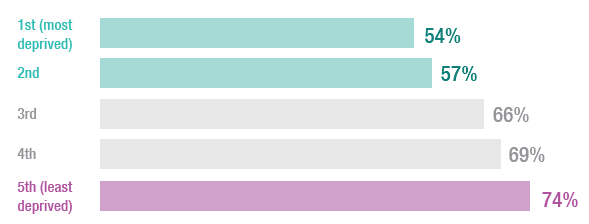Active Scotland Delivery Plan
Plan setting out actions that we and our partners are undertaking, working together to encourage and support people in Scotland to be more active, more often.
Introduction
Physical activity and sport are a powerful force in transforming lives. There is clear and growing evidence of the health, economic and social benefits physical activity and sport can bring. Physical activity and sport improve the health of the heart, skeletal muscles, bones and blood, the immune system and nervous system; and enable people to live longer, healthier lives. Being active improves psychological wellbeing, boosts self-esteem, plays an important role in maintaining a healthy weight and improves mood and sleep quality. The early years is a vitally important period to intervene to improve outcomes for children. There is strong evidence that intervention in this period, including through play, improves health and cognitive development.
Physical activity and sport can also play a major role in improving outcomes and tackling inequalities across many different aspects of our lives and society. Positive changes being achieved through physical activity and sport initiatives in Scotland include improving mental health, supporting weight management initiatives, overcoming loneliness and isolation; reducing reoffending; promoting sustainable forms of transport; and enabling people to connect with the natural environment.
What is physical activity?
In this document we use the definition of physical activity by the World Health Organization and UK Chief Medical Officers, which includes any bodily movement produced by skeletal muscles that requires energy expenditure. It thus includes activities such as everyday walking or cycling to get from A to B, active play, work-related activity, active recreation such as working out in a gym, dancing, gardening or playing active games, as well as organised and competitive sport and many other activities.
How much physical activity is enough?
Physical activity does not need to be strenuous to have significant effects on physical and mental health. In 2011, guidelines were issued by the four Chief Medical Officers ( CMOs) of England, Scotland, Wales and Northern Ireland. These drew on global evidence for the health benefits people can achieve by taking regular physical activity throughout their lives.
These guidelines are currently under review and an updated version is expected to be published in early 2019.
How active are people in Scotland?
Progress towards our vision of a Scotland where people in Scotland are more active, more often is measured through a set of indicators reported on our Active Scotland Outcomes Framework website. [1] This provides us with a clear understanding of where we are making progress and where we need to focus our attention. Following an expert review, a more detailed set of indicators will be published later in 2018 when the latest survey data becomes available, to build on our approach and to ensure that future activity is guided by clear evidence.
In terms of overall measures, the most recent survey data show that:
- In recent years, people have become more active, with participation rising to 75 per cent in 2011 and again to 79 per cent in 2016. Participation in all physical activity and sport had remained relatively constant between 2007 and 2010 at around 72 per cent. This increase is in part driven by the growing popularity of recreational walking, with walking participation having risen from 57% in 2011 to 67% in 2016. (Scottish Household Survey 2016)
- 64% of adults met the Chief Medical Officers' guidelines for moderate or vigorous physical activity, a similar level to that seen since 2012 (62-64%) (Scottish Health Survey 2016).
- 76% of children meet the average daily guidelines on physical activity, an increase from 71% in 2008 (Scottish Health Survey 2016).
We therefore know that the majority of the population meets the Chief Medical Officers' guidelines, but we want to go further.
Physical Activity
Two thirds of adults (64%) met the guidelines for Moderate or Vigorous Physical Activity in 2016, a similar level to that seen since 2012 (62-64%).
- Younger age groups continued to be more likely than older age groups to meet the MVPA guidelines (75-76% of those aged 16-44, compared to 30%of those aged 75 and over).
Men (69%) continue to be more likely than women (59%) to meet the MVPA guidelines.
Adults in the two most deprived areas were less likely to adhere to MVPA guidelines than those in the least deprived area.

- Younger children were more likely than older children to meet the physical activity guidelines, (82% of 5-7 year-olds doing so, compared with 61% of those aged 13-15, school-based activity included).
- In 2016, 68% of children had participated in sport and exercise in the week prior to the interview, this has been relatively stable since 2010 but fluctuated in previous survey years with the highest level seen in 2009 (73%).
76% of children met the guidelines on physical activity, an increase from 71% in 2008.
Girls (72%) had significantly lower levels of physical activity than boys (79%).
Source: Scottish Health Survey 2016
Contact
There is a problem
Thanks for your feedback